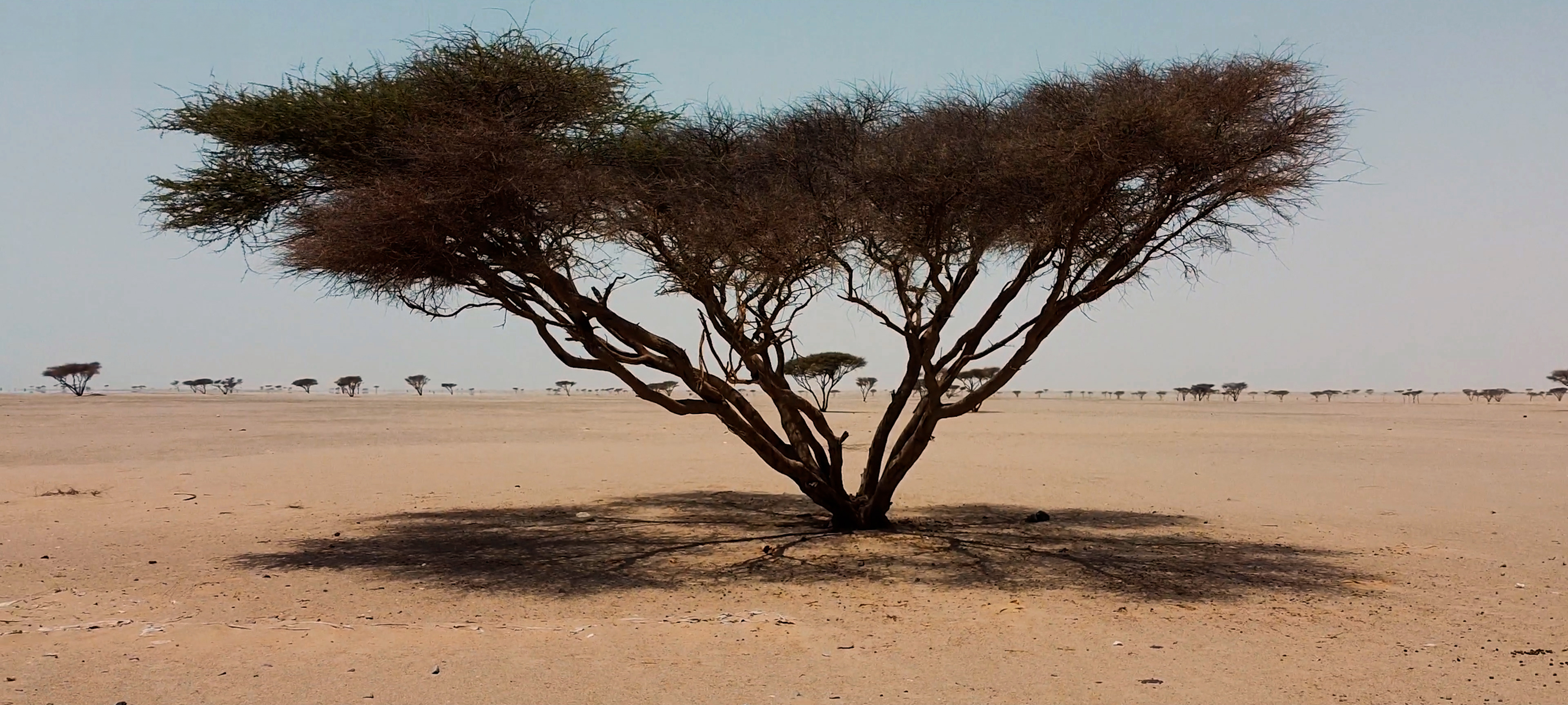Acacia trees: Strength, resilience, and timeless beauty
I, and others like me, have been standing for nearly 600 years. Together, we have witnessed great change in our home: the birth of the nation, the discovery of oil, and the opening of borders to visitors from around the world, all while giving undemandingly to humans.
Amid Saudi’s arid landscapes, you will find us - Acacia trees. Immovable and patient, our twisted trunks and spreading canopies are living legends, and evidence that beauty and strength can flourish in vast desert expanses.
Yet, our presence is more than aesthetic; it's a lifeline. We offer vital shelter for animals. Our extensive root systems protect against the forces of soil erosion, and ancient people relied on us for shade, and nectar for honey.
These people called us Acacia. Our most common tribe (‘species’ in human speak) was named Acacia tortilis but you renamed me, Vachellia.
Gradually, we have worked our way into Saudi culture, becoming the protagonists of folklore, the muse of poets, and the subject of songs. We stand as symbols of resilience, deeply intertwined with the pulse of the land and the heart of the people.
But what truly captivates the imagination is our remarkable longevity. Centuries ago, many of us even saw pilgrims from around the world traveling the Hijazi coasts. Our exceptional lifespan stems from our ability to withstand extreme environmental conditions while keeping our structural integrity throughout the ages.
In my lifetime, I have provided shelter to animals now extinct. My parents likely shaded lions, Arabian ostrich, cheetah, and other animals that once roamed our land.
Our adaptations are our secret to survival, enabling us to thrive and endure over time. Our extensive root system taps into nutrient-rich water even in the driest of regions. And, our specialized leaf structures, including small leaflets and thorns, help to conserve water and deter herbivores. I may be slow to grow, but I have a highly effective energy conservation strategy, further increasing my resilience by reducing susceptibility to diseases and environmental stressors.
Our longevity contributes to biodiversity, providing habitats, food, and support for various organisms. We are the architects of life, showcasing nature's resilience and adaptability. We are not just survivors; we are living records of exceptional adaptations and an enduring spirit in the Arabian Desert.
I, and my friends, hope that the next time you pass us, you will appreciate just how special we are and help to protect us and our habitats. Please help our children to grow, become established, and thrive for generations to come.
About Red Sea Global
Red Sea Global (RSG) is a vertically integrated real estate
developerwith a diverse portfolio across tourism, residential,
experiences,infrastructure, transport, healthcare, and services. This
includes theluxury regenerative tourism destinations The Red Sea, which
beganwelcoming guests in 2023, and AMAALA, which remains on track to
welcomefirst guests in 2025.
A third destination, Thuwal Private Retreat openedin 2024. RSG has
also been entrusted with refurbishment works at Al WajhAirport, focused
on upgrading the existing terminal and infrastructure,and building a new
international terminal.
RSG is a PIF company and acornerstone of Saudi Arabia’s ambition to
diversify its economy. Acrossits growing portfolio of destinations,
subsidiaries, and businesses, RSGseeks to lead the world towards a more
sustainable future, showing howresponsible development can uplift
communities, drive economies, andenhance the environment.
www.redseaglobal.com
RSG is the visionary company behind some of the world’s most ambitious
development ventures, including luxury regenerative tourism destinations
such as The Red Sea and AMAALA.
Across its portfolio, RSG leverages the most innovative concepts,
strategies, and technologies to deliver projects that actively enhance
the wellbeing of customers, communities, and environments.



